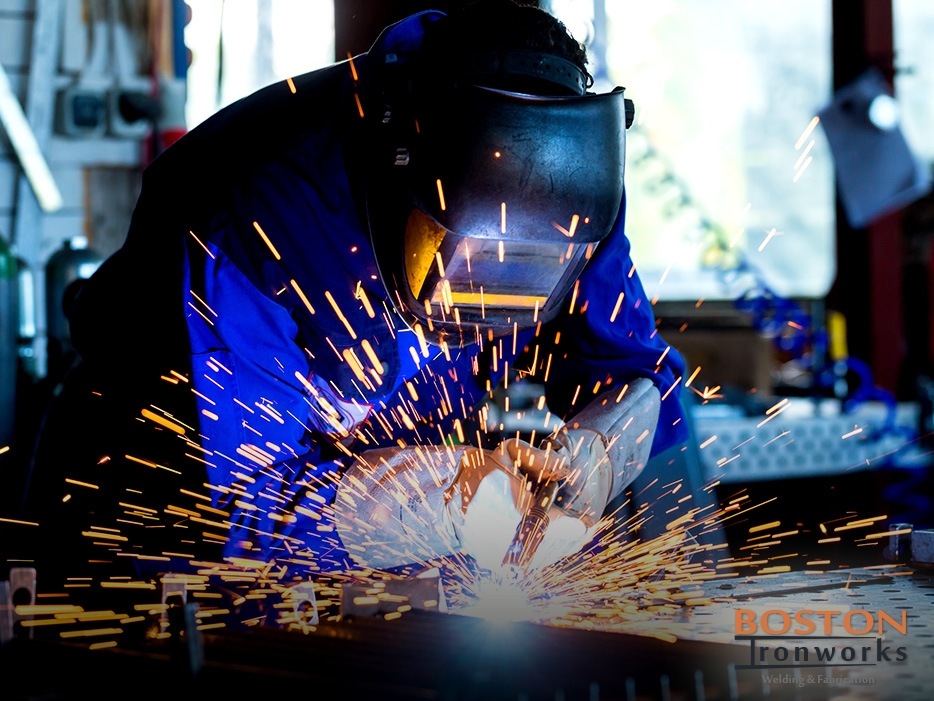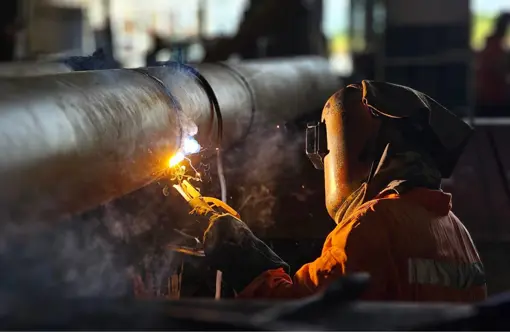Typical Welding Fixing Issues and How to Address Them Effectively
Welding repair work frequently experience a series of issues that can endanger the stability of the final product. Common issues include poor penetration, porosity, and misalignment, to name a few. Each problem presents special difficulties that require particular methods for resolution. Recognizing these concerns is important for welders intending to boost their abilities and end results. This discussion will discover these typical welding repair work problems and efficient methods to resolve them.
Inadequate Infiltration
Inadequate penetration takes place when the weld steel falls short to fully fuse with the base material, leading to weak joints and potential architectural failings. This problem frequently comes from not enough warm input, inaccurate electrode angle, or improper welding speed. Welders might encounter poor penetration as a result of a miscalculation of the needed specifications for a certain material density or type. In addition, contamination on the base product's surface can prevent efficient bonding, exacerbating the trouble. To resolve inadequate infiltration, welders need to guarantee proper setups on their tools and preserve a tidy work surface. Regular assessment of welds is suggested to determine any kind of deficiencies early, enabling prompt improvements and the avoidance of jeopardized structural stability in bonded assemblies.
Porosity
Porosity is a typical issue in bonded joints that materializes as small gas bubbles caught within the weld steel. This issue can compromise the stability of the weld, bring about lowered stamina and prospective failure under stress. Welding. Porosity generally arises from contamination, dampness, or improper welding techniques, which enable gases to escape into the molten weld pool. To attend to porosity, welders ought to assure appropriate surface area prep work, keep a tidy working atmosphere, and make use of suitable welding specifications. Furthermore, choosing the appropriate filler material and protecting gas can alleviate gas entrapment. Regular inspection and testing of welds can assist identify porosity early, assuring timely restorative actions are taken, consequently preserving the top quality and reliability of the bonded structure
Misalignment
Misalignment in welding can occur from various variables, consisting of improper setup and thermal growth. Recognizing the origin is necessary for reliable resolution. A number of improvement strategies are readily available to realign components and guarantee structural honesty.
Root causes of Misalignment
Welding misalignment usually comes from a variety of underlying concerns that can endanger architectural stability. One main reason is improper fit-up of parts before welding, which can cause voids and irregular surfaces. Variants in thermal development during the welding process can also result in distortion, specifically if the materials being joined have different coefficients of growth. Furthermore, poor clamping and fixturing might stop working to hold components firmly in position, resulting in movement throughout welding. Badly conserved devices, consisting of welding equipments and tools, might introduce inconsistencies in the weld bead, additional contributing to misalignment. Operator error, stemming from insufficient training or experience, can also play a considerable role in producing misaligned welds.

Correction Strategies Offered
Dealing with imbalance successfully needs a mix of rehabilitative techniques tailored to the particular concerns handy. One typical technique is making use of fixtures or jigs to hold parts in the correct placement throughout welding, guaranteeing constant positioning. In addition, pre-heating the materials can help in reducing distortion and boost fit-up. For substantial imbalance, mechanical realignment techniques, such as making use of hydraulic jacks or clamps, can be employed to deal with the placement prior to welding. Post-weld heat treatment might likewise be essential to alleviate tensions brought on by imbalance. Mindful evaluation and modification throughout the setup phase can avoid imbalance concerns from becoming significant troubles, advertising a smoother welding procedure and boosting general architectural stability.
Distortion
Distortion is an usual difficulty in welding that can arise from numerous variables, consisting of irregular home heating and cooling. Understanding the reasons for distortion is necessary for applying reliable prevention strategies. Addressing this problem not just boosts structural honesty however likewise enhances the general high quality of the weld.
Reasons for Distortion
When subjected to the intense heat of welding, products frequently undergo modifications that can cause distortion. This sensation mainly develops from thermal development and contraction during the welding procedure. As the weld location warms up, the material expands; upon cooling, it contracts, which can develop interior tensions. Furthermore, uneven home heating across a work surface can worsen these stresses, resulting in warping or flexing. The kind of material likewise plays a significant duty; steels with varying thermal conductivity and coefficients of expansion may respond in different ways, leading to unpredictable distortions. Inadequate joint style and insufficient fixturing can add to misalignment during welding, raising the likelihood of distortion. Understanding these causes is necessary for reliable welding fixing and avoidance approaches.
Prevention Techniques
Efficient avoidance methods for distortion throughout welding focus on managing heat input and making sure appropriate joint style. Preserving a constant warmth input helps to decrease thermal development and contraction, which can lead to distortion. Making use of techniques such as preheating the work surface can additionally lower the temperature level slope, promoting consistent home heating. Additionally, selecting suitable joint styles, such as T-joints or lap joints, can boost stability and minimize stress and anxiety focus. Implementing proper fixturing to protect the work surfaces in location additionally help in maintaining positioning during the welding procedure. Staggered welding sequences can disperse warmth more equally, protecting against local distortion. By using these approaches, welders can considerably reduce the probability of distortion and enhance the total top quality of their welds.
Cracking
Splitting is an usual issue run into in welding fixings, typically resulting from numerous variables such as inappropriate air conditioning prices, product choice, or inadequate joint preparation. The event of fractures can considerably endanger the honesty of the weld, bring about potential failings during procedure. To address this concern, welders must first evaluate the source, guaranteeing that products work and properly selected for the particular application. In addition, managing the air conditioning price throughout the welding procedure is vital; quick cooling can cause tension and cause breaking. Correct joint style and preparation additionally add to reducing the risk. Applying these techniques can boost weld top quality and resilience, inevitably reducing the possibility of cracking in completed weldments.

Insufficient Blend
A significant problem in welding repairs is insufficient fusion, which takes place when the weld steel does not adequately bond with the base product or previous weld passes - Belgrade. This flaw can result in weak points in the joint, possibly endangering the honesty of the welded structure. Aspects contributing to incomplete dewalt welding table blend include not enough heat input, incorrect welding method, and contamination of the surface areas being joined. To resolve this concern properly, welders must ensure appropriate pre-weld cleansing and surface area preparation, in addition to adjust their welding specifications to achieve adequate infiltration and fusion. Regular evaluation during the welding procedure can likewise assist determine incomplete fusion early, permitting prompt rehabilitative steps to boost the overall top quality of the weld
Overheating
While welding repair work can boost structural integrity, overheating presents a substantial obstacle that can cause material destruction. Extreme warmth throughout welding can modify the mechanical homes of metals, resulting in lowered toughness, boosted brittleness, and bending. This sensation is specifically vital in high-stress applications where architectural integrity is extremely important. Recognizing overheating can involve aesthetic examinations for discoloration or distortion, in addition to checking temperature level during the welding process. To minimize the threats connected with overheating, welders ought to use ideal methods, such as regulating warmth input, readjusting traveling speed, and making use of ideal filler products. Furthermore, carrying out pre- and post-weld heat therapies can aid restore product residential or commercial properties and boost the general top quality of the fixing, guaranteeing lasting efficiency and safety and security.
Frequently Asked Questions
What Are the Usual Signs of a Welding Defect?

Just How Can I Check My Welds for High quality?
To evaluate welds for top quality, one can utilize visual evaluations, ultrasonic screening, and radiographic approaches. Each technique assures architectural honesty, recognizes problems, and confirms adherence to defined requirements, ultimately boosting the reliability of the bonded joints.
What Safety and security Safety Measures Should I Take While Welding?
When welding, one must focus on safety and security by putting on ideal individual safety equipment, guaranteeing appropriate air flow, protecting flammable materials away, preserving a clean workspace, and knowing surroundings to avoid accidents and injuries.
Can I Repair a Weld Without Redoing the Entire Joint?
Fixing a weld without redesigning the whole joint is feasible, depending upon the damage (Belgrade). Techniques such as grinding, including filler material, or using a welding procedure can successfully resolve details flaws while preserving the surrounding framework
What Devices Are Necessary for Effective Welding Repair Works?
Vital devices for effective welding fixings include a welding equipment, wire brush, grinder, safety gear, clamps, and filler products. Each device plays an important function in ensuring high quality and safety and security during the fixing procedure. Porosity typically occurs from contamination, moisture, or inappropriate welding methods, which enable gases to get away right into the liquified weld swimming pool. Improperly kept equipment, consisting of welding makers and tools, may introduce variances in the weld grain, further contributing to imbalance. When subjected to the extreme warm of welding, products often undertake adjustments that can lead to distortion. Cracking is a common concern experienced in welding repairs, often resulting from numerous aspects such as improper air conditioning prices, material option, or poor joint preparation. A substantial concern in welding repair services is incomplete blend, which occurs when the weld metal does not appropriately bond with the base product or previous weld passes.